An Overview of Neptune's Magnetosphere
The magnetosphere of Neptune is very much like that of Uranus, medium sized but still much larger than the Earth's. Like that of Uranus, is probably generated in the icy middle layers of the interior, rather than with a metallic component at the core.
Like Uranus, the magnetosphere of Neptune has an extreme tilt, almost 60 degrees from the vertical. Because the rotation axis of Neptune is not tilted however, the magnetosphere of Neptune has a more standard, but still completely unique structure.
Mathematical theory suggests that the rings of Neptune affect the motion of particles in this unique magnetosphere, and also are responsible for the presence of three small plasmaspheres instead of one large version!
Like Saturn, Neptune's magnetosphere produces faint aurora, as well as radio emissions and other waves, such as whistler waves, chorus and hiss.
 "What is a Magnetosphere?"
"What is a Magnetosphere?"
 Detecting Magnetic Fields with Spacecraft
Detecting Magnetic Fields with Spacecraft
 The Poles of Neptune
The Poles of Neptune
You might also be interested in:
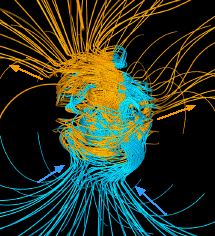
Magnetospheres are generated with magnetic materials and motions within the magnetic material. Scientists believe that as long as a planet or star has these two ingredients it can generate a magnetic
...more
Motions in the interior of a planet helps to carry heat from the core to the planet's surface. The drawing to the left illustrates a kind of global motion that is typical of motions in the atmosphere as
...more
You are probably familiar with bar magnets. Bar magnets have two magnetic poles - north and south. The magnetic field around a bar magnet is called a dipole ("two poles") magnetic field. Bar magnets are
...more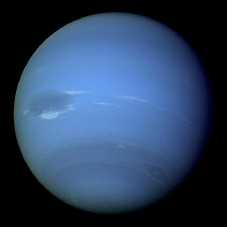
If you had a quiz question in school that asked what year Neptune was discovered, you'd probably choose 1846. But Neptune wasn't discovered the way all the other planets in our solar system were. Astronomers
...more
Neptune's atmosphere shows a striped pattern of clouds. This cloud pattern is very similar to that of Jupiter and Saturn. Neptune even has a Great Dark Spot similar to Jupiter's Great Red Spot. The structure
...more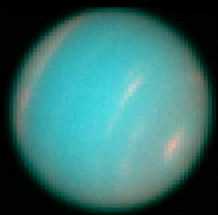
This image shows the new Great Dark Spot of Neptune, which was discovered using the Hubble Space Telescope. The image shown here, shows a "hole" in the clouds of Neptune in pink, in the northern hemisphere,
...more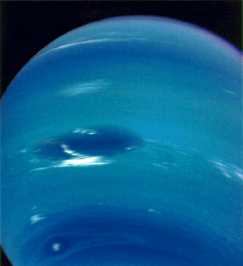
Atmospheres of the giant planets have definitely evolved from their formation out of the primitive solar nebula. How much they have evolved remains to be seen, however. Because of their enormous gravity,
...more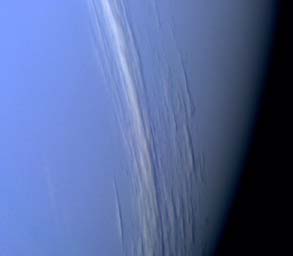
This image shows some cirrus clouds, extending for many kilometers across the disc of Neptune. These clouds are somewhat high up, for they can be seen to cast shadows on the lower clouddeck, which is 35
...more
 Detecting Magnetic Fields with Spacecraft
Detecting Magnetic Fields with Spacecraft












